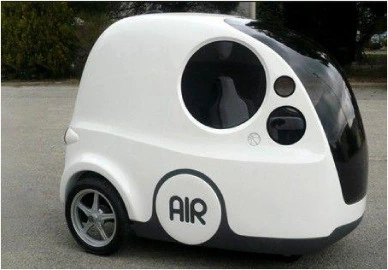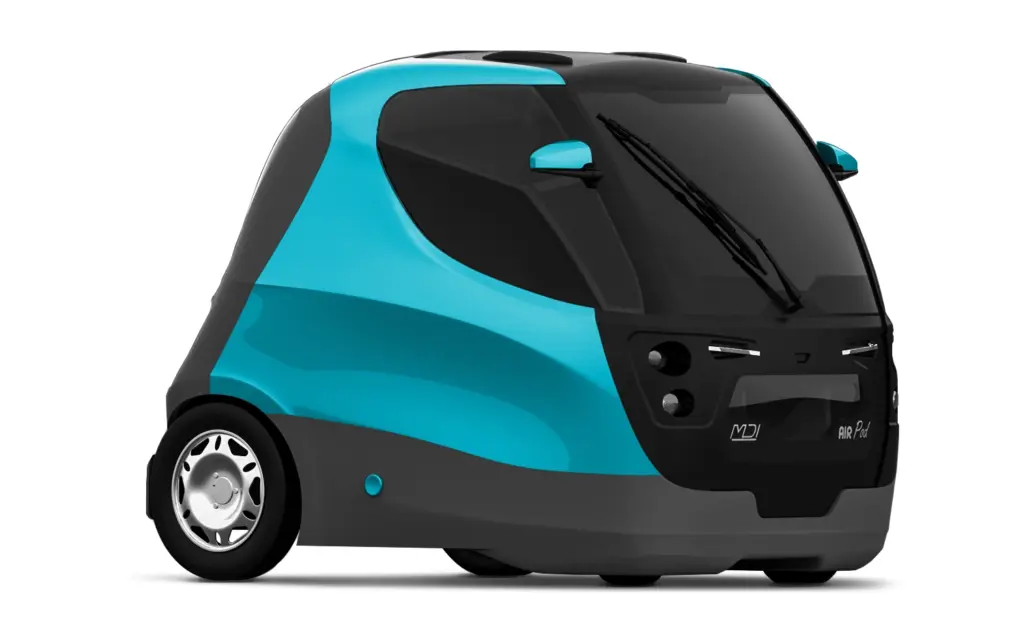The search for eco-friendly alternatives to internal combustion engines has led to groundbreaking innovations, among which air-powered engines stand out. This technology, although still in development, offers a clean and efficient option for urban transportation and other applications. In this article, we will explore models that use this technology, their advantages, drawbacks, estimated costs, power, range, and other green engine alternatives available in the market.
How do Air-Powered engines work?
An air-powered engine uses air stored in a pressurized tank as its energy source. When released, the compressed air drives a piston or turbine, generating mechanical motion without the need for fossil fuels. The engine operates on principles similar to those of internal combustion engines but with zero pollutant emissions.
Vehicle models with Air-Powered engines
1. Tata Motors – AirPod:
Developed in collaboration with MDI (Motor Development International), this prototype is one of the most recognized vehicles employing this technology. The AirPod is a compact urban vehicle designed for short trips.
- Power: 5-7 kW (equivalent to approximately 8-10 HP).
- Range: About 120-150 km on a full tank.
- Top Speed: 50-70 km/h.
- Estimated Price: $10,000-$12,000.

2. MDI Air Car:
Another development from MDI, this model features a more conventional design resembling a compact car. Ideal for urban fleets and public transportation.
- Power: 15-20 kW (20-27 HP).
- Range: Up to 200 km.
- Top Speed: 80-100 km/h.
- Estimated Price: $15,000-$20,000.

Advantages of Air-Powered engines
- Zero Direct Emissions: Since no fuel is burned, there is no release of carbon dioxide, nitrogen oxides, or particulates.
- Low Operating Costs: Air is abundant and free; costs are limited to compression.
- Reduced Maintenance: Air-powered engines have fewer moving parts than combustion engines.
- Quick Refueling: A compressed air tank can be refilled in minutes at specialized stations.
Drawbacks of Air-Powered engines
- Low Energy Density: Compressed air stores less energy compared to fossil fuels or batteries, limiting range.
- Dependence on External Energy: While the engine itself emits no pollutants, air compression requires electricity, which may come from non-renewable sources.
- Limited Infrastructure: Compressed air refueling stations are not widely available.
- Performance in Cold Climates: Low temperatures can affect system efficiency.
Eco-Friendly alternatives to Air-Powered engines
1. Electric Motors:
Electric vehicles (EVs) are the most widespread alternative, offering ranges of up to 500-600 km and very low operating costs. Examples: Tesla Model 3, Nissan Leaf.
2. Hydrogen Engines:
Hydrogen as a fuel source delivers zero emissions and a range comparable to combustion vehicles. Examples: Toyota Mirai, Hyundai Nexo.
3. Hybrid Engines:
These combine internal combustion engines with electric motors to reduce emissions. Examples: Toyota Prius, Honda Insight.
4. Biofuels:
Engines powered by biodiesel or ethanol, fuels derived from renewable sources like plants or organic waste.
Future and prospects
While air-powered engines face technical and logistical challenges, they hold promise for urban applications and public transportation. Advances in materials, energy efficiency, and infrastructure development could allow this technology to compete directly with electric and hydrogen vehicles in the future.


Deja una respuesta